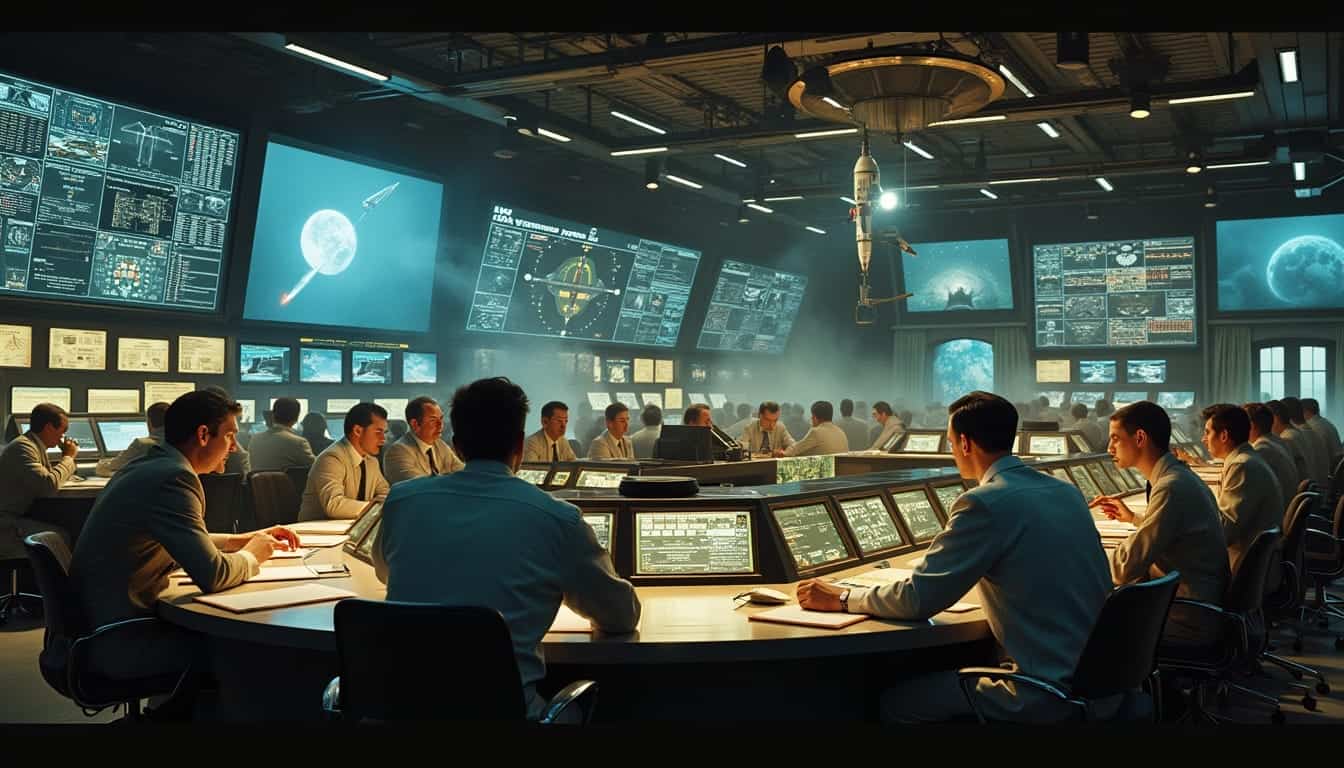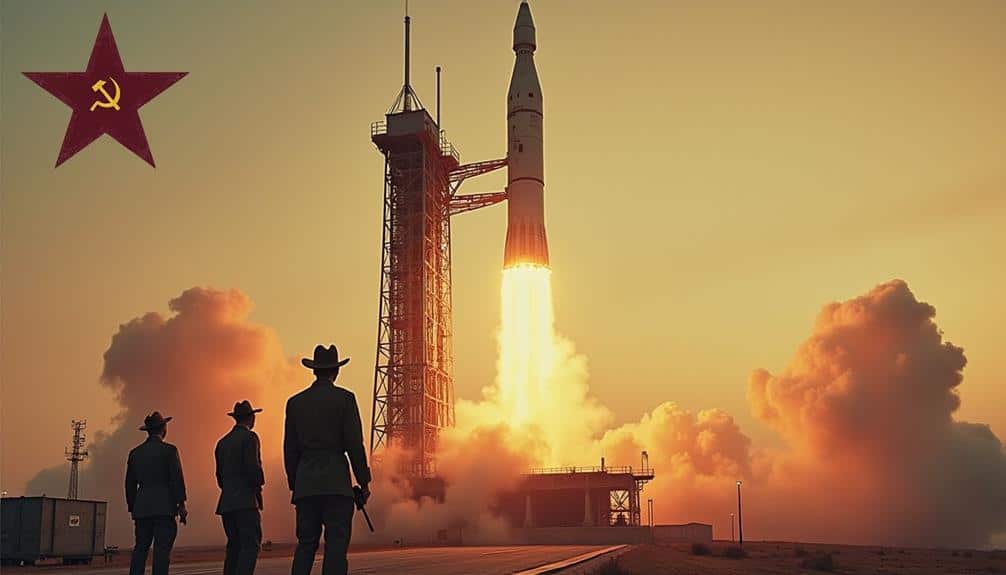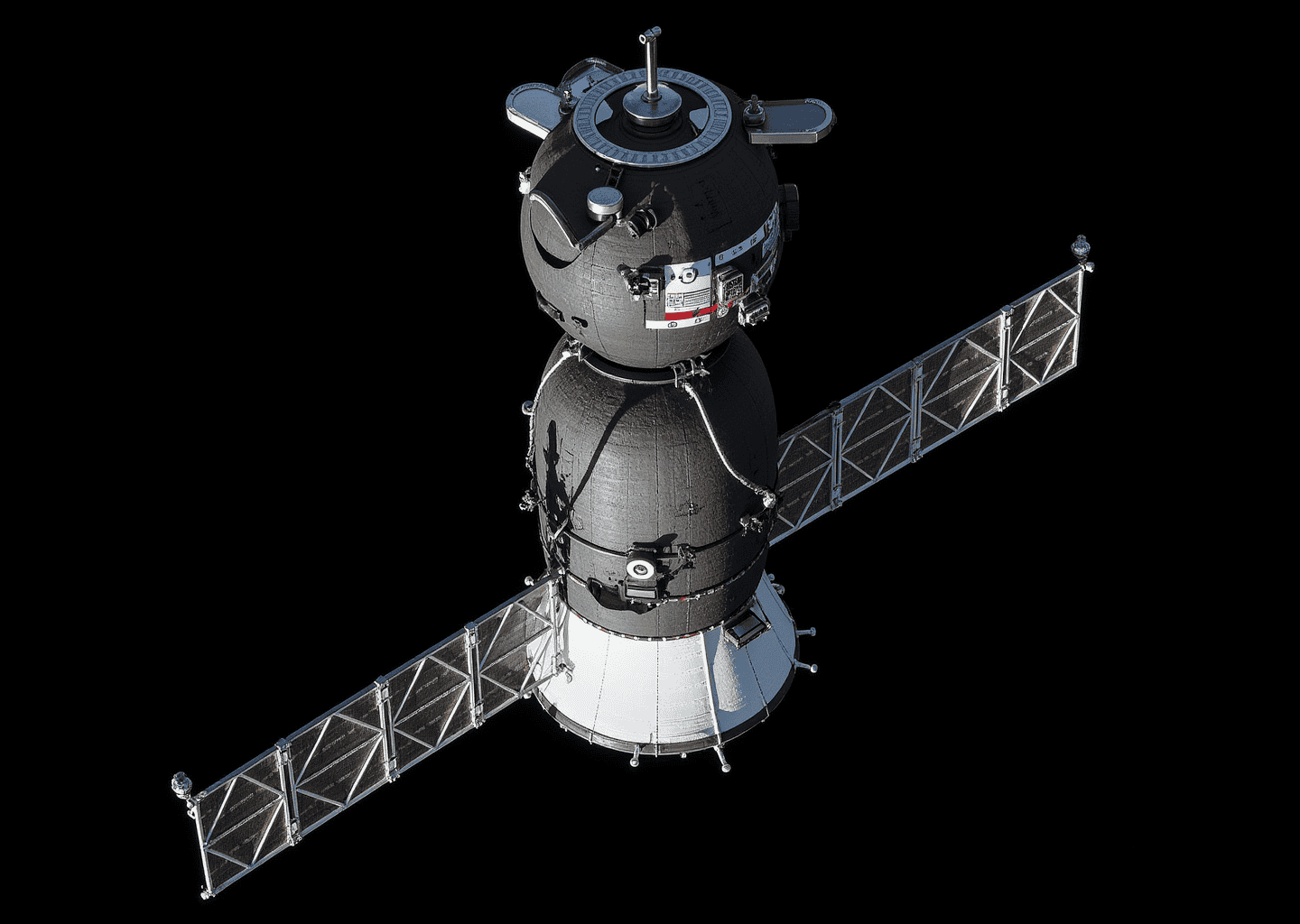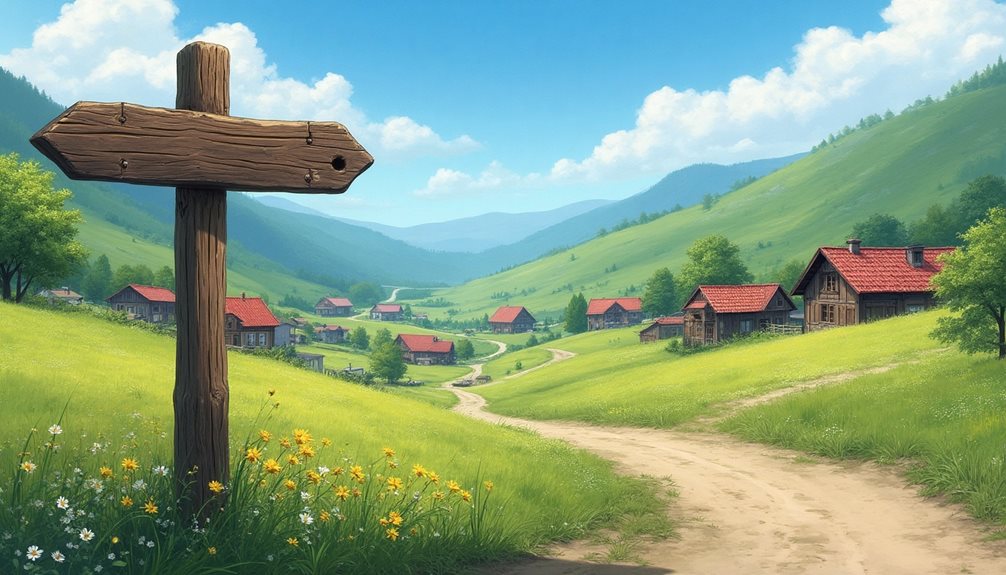Russia’s space program, with its roots deeply embedded in the Soviet Union’s ambitious endeavors, stands as a cornerstone in the annals of space exploration history. The 1957 launch of Sputnik 1 heralded a new era, propelling the USSR to the forefront of a high-stakes space race with the United States. Following this, groundbreaking milestones such as Yuri Gagarin’s 1961 voyage and the development of the Mir space station underscored the USSR’s scientific prowess and its role in fostering international space collaboration. Yet, what were the underlying motivations and challenges that shaped these historic feats?
Introduction to Russia’s Space Program

Russia’s space program has played a pivotal role in the history of space exploration, marking several groundbreaking achievements in the mid-20th century.
The launch of Sputnik in 1957 and Yuri Gagarin’s historic flight in 1961 underscored the nation’s commitment to scientific advancement and technological prowess.
These milestones not only demonstrated Russia’s capabilities but also became a source of immense national pride, reflecting the broader geopolitical context of the Cold War era.
Watch our video conversation on the history of Russia’s Space Program, it’s full of interesting information.
Brief overview of Russia’s historical significance in space exploration
Emerging from the geopolitical tensions of the Cold War, the Soviet Union’s space program marked a pivotal chapter in the annals of human exploration. The Soviet innovations in rocketry and spaceflight set the stage for a series of unprecedented achievements. In 1957, the launch of Sputnik 1, the first artificial satellite, symbolized the commencement of the cosmic competition between the superpowers. This marked a period of rapid technological advancements, with the Soviet Union taking an early lead in the Cold War rivalry.
Following Sputnik, the Soviet space program achieved another milestone with Yuri Gagarin’s historic flight in 1961, making him the first human to orbit Earth. These early successes were not merely driven by national pride but were also underpinned by significant scientific research and development.
The Soviet Union’s space endeavors laid the groundwork for subsequent international partnerships. The Apollo-Soyuz Test Project in 1975 exemplified this shift, bridging the gap between Soviet and American programs.
Throughout these formative years, the Soviet Union’s contributions to space exploration were profound, setting the foundation for future collaborative efforts and continued advancements in space technology. This era of cosmic competition undeniably cemented Russia’s historical significance in space exploration.
Importance of national pride in achievements
The Soviet Union’s early accomplishments in space exploration were not only technological feats but also potent symbols of national pride. Beginning with the launch of Sputnik in 1957, these achievements helped solidify a sense of national identity and cultural pride within the USSR. The successful orbiting of Yuri Gagarin in 1961, as the first human in space, further exemplified the technological advancements that underscored Soviet superiority in the area of global competition.
As the space race intensified, these milestones became critical in the Cold War context, where each nation sought to demonstrate its dominance. The USSR’s ability to advance in space exploration fostered a profound educational impact, inspiring generations of scientists, engineers, and students to contribute to these prestigious endeavors.
The emphasis on scientific and technological education became a cornerstone of Soviet ideology, reinforcing the significance of these space achievements in establishing a robust national identity.
Moreover, these achievements were celebrated as cultural milestones, integrating deeply into the national psyche and fostering a collective sense of pride. The Soviet space program consequently served as a powerful tool in both advancing technological progress and nurturing a unified national spirit.

The Launch of Sputnik
The launch of Sputnik 1 on October 4, 1957, marked a pivotal moment in the history of space exploration, establishing the Soviet Union as a formidable force in the space race.
This event profoundly altered global perceptions, demonstrating Soviet technological prowess and sparking increased competition with the United States.
Subsequent milestones, including the launch of Sputnik 2 and the first human spaceflight by Yuri Gagarin, further cemented the Soviet Union’s leading role in early space exploration.
The significance of Sputnik 1 in 1957
Amid the intense geopolitical landscape of the Cold War, the launch of Sputnik 1 on October 4, 1957, marked a pivotal moment in human history and space exploration. The significance of Sputnik cannot be overstated; it symbolized the Soviet Union’s technological advancements and established a new front in the Cold War rivalry between the United States and the USSR.
This 83.6 kg satellite, equipped with radio transmitters, orbited the Earth every 96 minutes, providing the first real evidence of human capability to reach beyond our planet’s atmosphere.
The technological advancements represented by Sputnik 1 spurred a worldwide reaction. Public perception varied; while the Soviet citizens celebrated their nation’s achievement, the event generated fear and urgency in the United States, leading to the acceleration of their own space program.
Additionally, Sputnik’s success prompted a surge in scientific interest and collaboration, highlighting the potential for space to serve as a new domain for research and innovation.
Chronologically, Sputnik 1’s launch set off a chain of events that would eventually lead to the establishment of NASA in 1958 and the beginning of the space race. This early milestone remains a defining moment in the annals of space exploration.
Impact on the global perception of the Soviet Union
Sputnik 1’s successful launch not only initiated the space race but also greatly altered global perceptions of the Soviet Union. On October 4, 1957, as the satellite orbited the Earth, it became a symbol of the USSR’s technological prowess. Amidst the Cold War, this unexpected scientific achievement showcased Soviet capabilities, heightening the technological rivalry between the superpowers.
The launch served as a potent propaganda tool for the Soviet Union. It demonstrated their advanced engineering and scientific expertise, undermining the West’s perception of Soviet inferiority in technology. This event shifted the geopolitical influence, as nations worldwide saw the USSR as a formidable force in science and technology, challenging the United States’ dominance.
In the chronological context of the Cold War, Sputnik’s success prompted a reevaluation of global power dynamics. Western nations, particularly the United States, felt an urgent need to catch up, leading to significant investments in their own space programs.
This moment marked the beginning of an era where space exploration became a critical arena for showcasing national strength. Sputnik 1’s launch consequently had a profound and lasting impact on the global perception of the Soviet Union, reshaping the landscape of international relations during a tense geopolitical era.
Key milestones that followed
In the wake of Sputnik 1’s groundbreaking success, several pivotal milestones in the Soviet space program further solidified its pioneering status. The immediate follow-up was the launch of Sputnik 2 on November 3, 1957, which carried Laika, the first living creature to orbit Earth. This demonstrated the USSR’s rapid advancements in space technology, escalating the space race and amplifying the Cold War’s technological competition.
The subsequent years saw a series of achievements that underscored Soviet supremacy in space exploration. On April 12, 1961, Yuri Gagarin became the first human to journey into outer space aboard Vostok 1, marking a significant leap in satellite diplomacy. This mission not only showcased superior technological capabilities but also served as a powerful political statement during the Cold War.
The Soviet Union also pursued lunar ambitions, culminating in the success of Luna 2 on September 12, 1959, which became the first human-made object to impact the Moon. This was followed by Luna 3, which transmitted the first images of the Moon’s far side in October 1959.
These milestones collectively underscored the USSR’s commitment to maintaining its lead in the space race, profoundly influencing global perceptions of technological prowess.
Pioneers of Human Spaceflight

The era of human spaceflight commenced on April 12, 1961, when Yuri Gagarin became the first human to journey into outer space, a monumental achievement that underscored the USSR’s technological prowess and fostered national pride.
Gagarin’s mission aboard Vostok 1 not only marked a milestone in space exploration but also had profound global implications, intensifying the space race and inspiring subsequent space endeavors.
Two years later, Valentina Tereshkova’s historic voyage as the first woman in space further cemented the Soviet Union’s leadership in space exploration and paved the way for greater gender inclusion in the sciences.
Yuri Gagarin: First Human in Space
On April 12, 1961, a significant milestone was achieved in the annals of human spaceflight when Yuri Gagarin, a Soviet cosmonaut, became the first human to journey into outer space and complete an orbit of Earth.
Gagarin’s achievement was the culmination of extensive training, which included physical conditioning, simulations, and technical instruction. This rigorous preparation was designed to guarantee Gagarin’s capability to withstand the physical and psychological stresses of space travel.
The Soviet Union’s space program leveraged Gagarin’s mission to bolster national pride and enhance its image on the global stage. Soviet propaganda prominently featured Gagarin as a symbol of human resilience and Soviet superiority in space technology.
This event occurred amid the intense global rivalry of the Cold War, where the space race served as a proxy battleground between the United States and the Soviet Union.
Gagarin’s successful mission was a pivotal moment in the space race, demonstrating the Soviet Union’s technological prowess and contributing to the competitive drive that would push both superpowers to further advancements in space exploration.
This landmark achievement underscored the extraordinary human resilience required to explore and ultimately conquer the harsh environment of outer space.
Overview of Gagarin’s mission and its significance
Marking a groundbreaking moment in the annals of human exploration, Yuri Gagarin’s mission on April 12, 1961, signified the first time a human ventured beyond Earth’s atmosphere and successfully orbited the planet.
Gagarin’s training was rigorous, involving physical conditioning, simulations, and psychological tests to prepare him for the unknowns of space travel. The mission, known as Vostok 1, carried significant challenges, including the need for reliable life support systems, precise orbital mechanics, and the potential for catastrophic failure.
In the context of the Cold War, the mission was more than a scientific endeavor; it was a pivotal episode in the global rivalry between the Soviet Union and the United States. The space race underscored technological prowess and ideological supremacy. Gagarin’s successful orbit marked a historic impact, demonstrating the Soviet Union’s advanced capabilities and intensifying the sense of urgency in American space efforts.
Chronologically, Gagarin’s mission began with a flawless launch, an orbit around Earth lasting 108 minutes, and culminated in a safe return, cementing his place as a pioneer of human spaceflight.
The mission’s success not only propelled further space exploration but also shifted the dynamic of geopolitical competition on a global scale.
National celebrations and global impact
How did the Soviet Union react to Yuri Gagarin’s monumental achievement? The successful mission of Vostok 1 on April 12, 1961, which saw Gagarin become the first human to orbit Earth, was met with immense national celebrations across the Soviet Union.
Streets filled with jubilant citizens, and state media extensively covered the historic event, cementing Gagarin’s status as a national hero. The cultural significance of this achievement resonated deeply, symbolizing Soviet technological prowess and ideological superiority during the Cold War.
This landmark event also had profound global impact. It initiated a new era of global partnerships in space exploration, as nations recognized the importance of international cooperation in advancing technological advancements.
Countries around the world, including the United States, were compelled to accelerate their space programs, leading to significant educational initiatives aimed at producing a new generation of scientists and engineers.
The ripple effects of Gagarin’s flight extended beyond geopolitics, fostering a collective human aspiration towards space exploration. The mission underscored the potential for human ingenuity and collaboration, inspiring educational efforts worldwide to focus on STEM (Science, Technology, Engineering, and Mathematics) fields, thereby ensuring continued progress in space technology and exploration.
Valentina Tereshkova: First Woman in Space
Valentina Tereshkova’s groundbreaking journey into space marked a significant milestone in human spaceflight and gender equality. On June 16, 1963, Tereshkova launched aboard Vostok 6, becoming the first woman to travel into space. Her selection was part of a strategic move by the Soviet Union to showcase their technological superiority and commitment to gender equality during the intense space race with the United States.
Tereshkova’s training was rigorous, designed to prepare her for the physical and mental challenges of space travel. It included parachute jumps, weightless flights, and isolation tests. Her background as a textile worker and amateur skydiver made her an emblematic figure of Soviet propaganda, which sought to highlight the accessibility of space exploration to ordinary citizens.
Despite the prevailing gender barriers of the era, Tereshkova’s mission received extensive media coverage, both within the Soviet Union and internationally. Her achievement was celebrated as a triumph not only for the Soviet space program but also for women worldwide.
The successful mission reinforced the Soviet narrative of progress and inclusivity, further intensifying the competitive spirit of the space race.
Tereshkova’s legacy remains a proof of the pioneering spirit of human space exploration.
Tereshkova’s journey and its implications for women in science
Valentina Tereshkova’s 1963 mission aboard Vostok 6 was a monumental event that greatly influenced gender equality in the scientific community. As the first woman to travel into space, Tereshkova’s impact extended beyond the domain of space exploration and served as a powerful statement endorsing the capabilities of women scientists.
Her successful mission challenged prevailing gender stereotypes and demonstrated that women could perform under the same rigorous conditions as their male counterparts.
Chronologically, Tereshkova’s journey catalyzed a series of initiatives aimed at promoting gender equality in scientific fields. It led to increased space advocacy for women’s involvement in STEM (Science, Technology, Engineering, and Mathematics) disciplines.
Subsequently, various educational outreach programs were developed to inspire young women to pursue careers in science and technology. These efforts were instrumental in breaking down barriers and expanding opportunities for women in traditionally male-dominated fields.
Legacy and inspiration for future generations
As the space race pushed the boundaries of human achievement, the legacy of early pioneers in human spaceflight became a cornerstone for future generations. The Soviet Union’s groundbreaking accomplishments, starting with Yuri Gagarin’s historic flight in 1961, laid the foundation for global collaboration in space exploration. These early milestones not only showcased technological innovation but also underscored the importance of educational outreach to inspire future scientists and engineers.
By the 1970s, the USSR’s space program had achieved numerous firsts, including the first spacewalk by Alexei Leonov and the launch of space stations like Salyut. These achievements facilitated youth engagement by highlighting the potential of human ingenuity and the power of collective effort.
Educational programs and public initiatives were launched to enhance space inspiration among young people, emphasizing the significance of STEM (Science, Technology, Engineering, and Mathematics) education.
The legacy of these pioneers is evident in the continued efforts toward international cooperation, as seen in projects such as the International Space Station. This global collaboration fosters an environment where technological advancements can thrive, ensuring that the spirit of exploration and discovery continues to motivate and inspire future generations across the world.
Advancements in Space Stations
The evolution of Russia’s space stations began with the Salyut program in 1971, marking the inception of the world’s first space stations and achieving significant milestones in orbital science and technology.
This groundwork culminated in the launch of the Mir Space Station in 1986, a modular platform that revolutionized long-term human habitation in space.
Mir’s operational success not only underscored Russia’s expertise in prolonged space missions but also facilitated unprecedented international collaboration, setting a precedent for future cooperative ventures like the International Space Station.
Salyut Program: The First Space Stations
Marking a pivotal moment in the annals of space exploration, the Salyut Program initiated by the Soviet Union in 1971 represented the dawn of humanity’s endeavor to establish a sustained presence in outer space.
The Salyut stations, designed to facilitate both military and civilian orbital research, were the first steps toward long-term habitation in the cosmos. The program began with the launch of Salyut 1 on April 19, 1971, which was followed by successive missions aimed at testing and refining space station technology.
Key to the program’s success was the rigorous crew training that prepared cosmonauts for extended stays in space and the execution of complex scientific experiments. Each Salyut station was equipped to support various research activities, ranging from astrophysics to Earth observation, hence advancing our understanding of space and its applications.
Salyut stations also served as an essential testbed for the development of docking procedures, life support systems, and other technologies vital for future space stations.
Overview of the Salyut program and its achievements
With the foundation laid by the initial launch of Salyut 1, the Soviet Union commenced a series of missions that would collectively redefine the scope of human capabilities in space. The Salyut program, spanning from 1971 to 1986, was instrumental in advancing space station technology and conducting groundbreaking scientific experiments.
The orbital missions of Salyut stations included both civilian and military applications, highlighting the versatility and strategic importance of these endeavors.
Salyut 1, as the first space station, faced challenges including the tragic Soyuz 11 re-entry disaster. However, subsequent stations like Salyut 6 and Salyut 7 demonstrated significant advancements.
Salyut 6, launched in 1977, featured dual docking ports, allowing for longer missions and international partnerships, particularly with the Interkosmos program, inviting cosmonauts from allied nations.
Salyut 7, operational from 1982 to 1986, further pushed the boundaries with its capacity for extensive scientific research, including materials processing and medical studies. The resilience of Salyut 7 was exemplified in 1985 when cosmonauts successfully repaired a malfunctioning module in orbit, showcasing human ingenuity in space.
Collectively, the Salyut program provided invaluable insights and laid the groundwork for future, more complex space stations.
Mir Space Station: A Modular Marvel
Mir Space Station, a demonstration of Soviet engineering prowess, represented a significant leap forward in the evolution of orbital habitats. Launched in 1986, Mir was the first modular space station, designed to expand through the addition of various Mir modules over time. This innovative approach allowed for greater flexibility and functionality, with each module dedicated to specific tasks such as living quarters, scientific research, and energy production.
The core module, Mir, was followed by the addition of the Kvant-1 astrophysics module in 1987, enhancing the station’s research capabilities. Subsequent modules, such as Kvant-2, Kristall, Spektr, and Priroda, were added throughout the late 1980s and 1990s. These Mir modules provided specialized laboratories for conducting a wide array of scientific experiments in microgravity.
Crucially, Mir’s docking technology enabled not only the attachment of these modules but also facilitated international collaborations. The docking ports allowed space shuttles from the United States and other countries to connect, marking a period of unprecedented international cooperation in space exploration.
Mir’s design also emphasized space station longevity. Despite being originally planned for a five-year mission, Mir remained operational for 15 years, setting a benchmark for future long-duration space habitats. This modular marvel paved the way for the International Space Station and other ambitious orbital projects.
Significance of Mir in long-term human presence in space
The innovations introduced by the Mir Space Station laid the groundwork for significant advancements in the long-term human presence in space. Launched in 1986, Mir was the first modular space station, allowing for incremental expansions. This design facilitated extended missions, enabling cosmonauts to remain in space for unprecedented durations.
Central to Mir’s success were its advanced life support systems, which were essential for sustaining human life over long periods. These systems recycled air and water, minimizing the need for resupplies from Earth.
Furthermore, Mir’s contributions to understanding psychological factors were invaluable. Prolonged isolation in a confined environment posed significant mental health challenges, and the data collected on Mir helped develop protocols to mitigate these effects.
The station also served as a hub for scientific research, providing a unique microgravity environment for experiments that ranged from biology to materials science. This research yielded insights that were not possible under Earth’s gravity, contributing to advancements in both space and terrestrial applications.
Additionally, Mir’s legacy includes fostering international partnerships. Although the details of these collaborations are discussed elsewhere, it is clear that Mir’s role in bringing together spacefaring nations was instrumental in shaping future cooperative efforts.
Contributions to international cooperation
A pivotal moment in the evolution of space stations was marked by the collaborative efforts spearheaded through the Mir Space Station. Launched by the Soviet Union in 1986, Mir became a cornerstone for international partnerships. In the early 1990s, the United States and Russia initiated the Shuttle-Mir Program, which allowed American Space Shuttles to dock with Mir. This program fostered numerous collaborative missions, laying the groundwork for future joint ventures.
The partnerships extended beyond the U.S. The European Space Agency (ESA) and other space-faring nations participated in scientific exchanges aboard Mir, contributing to global outreach in space research. These international collaborations were formalized through various space treaties, including the 1998 Intergovernmental Agreement on Space Station Cooperation, which set the stage for the International Space Station (ISS).
The ISS represents the pinnacle of international cooperation in space, with Russia playing a significant role. Russian modules such as Zarya and Zvezda were integral to the ISS’s construction.
The mutual dependency on each nation’s expertise has led to advancements in space technology and science, reinforcing the importance of collaborative efforts. Consequently, Russia’s contributions have been instrumental in fostering a spirit of global unity in space exploration.
The Soyuz Legacy
The Soyuz spacecraft, first launched in 1967, has become a cornerstone of Russia’s space endeavors, renowned for its reliability and long operational history.
Over the decades, it has played an essential role in international space missions, including being a primary vehicle for transporting astronauts to and from the International Space Station (ISS).
The robust engineering and design of the Soyuz have garnered widespread respect, reflecting Russia’s pride in its aerospace capabilities.
Overview of the Soyuz spacecraft’s history and reliability
Emerging from the early days of the space race, the Soyuz spacecraft has become synonymous with reliability and endurance in human spaceflight. Developed by the Soviet Union in the 1960s, Soyuz initiated its maiden voyage in 1967. Despite the tragic loss of cosmonaut Vladimir Komarov during this inaugural mission, subsequent iterations have continuously enhanced Soyuz reliability through rigorous engineering innovations.
A series of historical milestones underscores the spacecraft’s evolution. The Soyuz 9 mission in 1970 set a new record for human spaceflight duration, while the Soyuz 19 mission in 1975 marked a pivotal moment in international partnerships, docking with the American Apollo spacecraft in the Apollo-Soyuz Test Project. These missions demonstrated Soyuz’s capability and versatility.
Engineering innovations have been pivotal in ensuring mission success. Over the decades, the Soyuz design has undergone numerous upgrades, including advancements in life-support systems, propulsion, and re-entry mechanisms, ensuring its status as one of the safest spacecraft in operation.
The Soyuz spacecraft’s enduring legacy is further cemented by its role in countless successful missions, solidifying its reputation as a cornerstone of human space exploration and a reflection of Russian aerospace ingenuity.
Role in international space missions and ISS operations
Building on its storied history and established reliability, Soyuz has played an instrumental role in international space missions and operations aboard the International Space Station (ISS). Beginning in 2000, Soyuz became a vital component of ISS assembly and crew transportation, symbolizing Russia’s commitment to international partnerships and space diplomacy. The spacecraft’s consistent performance has facilitated numerous collaborative missions, fostering a spirit of global cooperation in space exploration.
Early in the ISS program, the Soyuz spacecraft was pivotal in transporting astronauts from various countries, underscoring its role in technological advancements and international collaboration. The reliability of Soyuz missions guaranteed continuous human presence on the ISS, especially during periods when other spacecraft were grounded. This reliability was essential from 2011 to 2020, when Soyuz served as the sole vehicle for crewed missions to the ISS following the retirement of the U.S. Space Shuttle.
Furthermore, the Soyuz has enabled significant research contributions by facilitating scientific experiments conducted in the unique microgravity environment of the ISS. Through these contributions, Soyuz not only bolstered Russia’s position in space exploration but also advanced global scientific knowledge, demonstrating the enduring legacy of this iconic spacecraft in international space operations.
Pride in engineering and design
Soyuz stands as a demonstration to the ingenuity and precision of Russian aerospace engineering. Introduced in the 1960s, the Soyuz spacecraft marked a significant milestone in space exploration, embodying engineering excellence and design innovation. Its development began under the guidance of Sergei Korolev, the chief designer, who envisioned a robust, reliable vehicle capable of advancing human spaceflight. The first uncrewed flight, Soyuz 1, launched in 1967, followed by the manned Soyuz 3 mission in 1968, showcasing early technological achievements despite initial setbacks.
Throughout the decades, iterative improvements in Soyuz’s design have incorporated advanced materials, enhanced avionics, and improved life-support systems, reflecting continuous aerospace advancements. The spacecraft’s modular design, consisting of an orbital module, descent module, and service module, exemplifies creative problem solving, allowing for versatile mission profiles, from lunar missions to International Space Station (ISS) support.
Soyuz’s legacy extends beyond its technological contributions; it symbolizes resilience and adaptability in the face of evolving space exploration demands. Its reliability has made it a cornerstone of international collaboration, particularly in ISS operations.
Today, Soyuz remains a symbol of Russia’s enduring commitment to pioneering space travel, blending historical significance with ongoing innovation.
Future Aspirations and Collaborations
As Russia looks to the future, the nation has outlined ambitious plans for space exploration, including potential lunar missions and expanded international collaborations.
Current initiatives include partnerships with countries such as China and the European Space Agency to advance both manned and unmanned missions.
These endeavors aim to build upon the enduring legacy of Russian space exploration, ensuring continued innovation and leadership in the field.
Overview of Russia’s plans for future space exploration
With an eye towards the future, Russia’s space program is strategically positioning itself to expand its capabilities and collaborations in space exploration. Among its ambitious goals, Mars colonization plans stand at the forefront. The Russian space agency, Roscosmos, has outlined a roadmap involving robotic missions followed by human expeditions to the Red Planet. These endeavors aim to establish a sustainable human presence on Mars by the 2040s.
Parallel to this, Russia is developing asteroid mining strategies. Collaborative efforts with both domestic and international entities aim to harness valuable resources from near-Earth asteroids, which could revolutionize industries on Earth and support long-term space missions.
Lunar base development is another significant component of Russia’s future space ambitions. Plans include constructing a permanent base on the Moon’s surface to serve as a hub for scientific research and a launch point for deeper space missions. The project involves international partnerships with countries and private enterprises, fostering a collaborative approach to lunar exploration.
To facilitate these grand visions, Russia is also investing in advanced propulsion systems. These innovations are essential for reducing travel time and increasing the efficiency of missions to distant celestial bodies, ensuring Russia remains a key player in the evolving landscape of space exploration.
Potential lunar missions and collaborations with other countries
Recognizing the strategic importance of international collaboration, Russia’s potential lunar missions are set to involve significant partnerships with other countries. Historically, Russia has laid the groundwork for such cooperation through bilateral agreements and participation in space treaties.
Looking towards the future, Russia’s lunar ambitions aim to leverage these international partnerships for both manned and robotic exploration. In recent years, Russia has initiated dialogues with countries such as China and India to coordinate lunar landing missions. These collaborations are projected to optimize resource utilization and reduce individual costs.
For instance, the Luna-Glob program, which includes a series of robotic lunar missions, is designed to map lunar resources and test technologies essential for sustainable human presence on the Moon.
Moreover, Russia’s involvement in the Lunar Gateway project, spearheaded by NASA, signifies its commitment to multilateral efforts. This space station, orbiting the Moon, will serve as a staging point for future missions and facilitate international scientific research.
The ongoing legacy of Russian space exploration
The collaborative undertakings for lunar missions mark a significant chapter in Russia’s space endeavors, reflecting the broader aspirations of its space program. These missions are not just about technological innovation but also embody space diplomacy, fostering international partnerships that enhance global cooperation.
Russia’s involvement in the International Space Station (ISS) serves as a demonstration of its commitment to collaborative progress, enabling cultural exchange and shared scientific advancements.
Chronologically, Russia’s post-Soviet era space initiatives have evolved from independent projects to active participation in multinational ventures. The Luna-Glob and Luna-Resurs missions exemplify this shift, where Russia collaborates with countries like China and the European Space Agency (ESA) to explore the Moon’s surface and resources.
Such partnerships leverage combined expertise, accelerating technological advancements and reducing individual financial burdens.
Additionally, Russia’s space program emphasizes educational outreach, aiming to inspire future generations of scientists and engineers. Through initiatives like the Yuri Gagarin Cosmonaut Training Center, educational collaborations with institutions worldwide are strengthened, promoting a global culture of space exploration.
Thus, the ongoing legacy of Russian space exploration is characterized by a blend of technological prowess, international cooperation, and a commitment to nurturing future talent, ensuring the enduring significance of its contributions to humanity’s quest to explore the cosmos.





